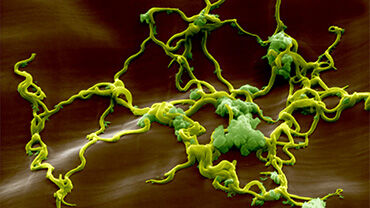Using Geographic Information Systems and Decision Support Systems for the Prediction, Prevention, and Control of Vector-Borne DiseasesArchived
Emerging and resurging vector-borne diseases cause significant morbidity and mortality, especially in the developing world. We focus on how advances in mapping, Geographic Information System, and Decision Support System technologies, and progress in spatial and space time modeling, can be harnessed to prevent and control these diseases.
Eisen L (1), Eisen RJ (2) (1) Department of Microbiology, Immunology, and Pathology, Colorado State University, Fort Collins, Colorado.(2) Division of Vector-Borne Infectious Diseases, Coordinating Center for Infectious Diseases, Center for Disease Control and Prevention, Fort Collins, Colorado.Annu. Rev. Entomol. 2011. 56:41–61.
Emerging and resurging vector-borne diseases cause significant morbidity and mortality, especially in the developing world. We focus on how advances in mapping, Geographic Information System, and Decision Support System technologies, and progress in spatial and space time modeling, can be harnessed to prevent and control these diseases. Major themes, which are addressed using examples from tick-borne Lyme borreliosis; flea-borne plague; and mosquito-borne dengue, malaria, and West Nile virus disease, include (a) selection of spatial and space-time modeling techniques, (b) importance of using high-quality and biologically or epidemiologically relevant data, (c) incorporation of new technologies into operational vector and disease control programs, (d ) transfer of map-based information to stakeholders, and (e) adaptation of technology solutions for use in resource-poor environments. We see great potential for the use of new technologies and approaches to more effectively target limited surveillance, prevention, and control resources and to reduce vector-borne and other infectious diseases.
VBORNET comment: 2010-04-29
Spatial-time risk models are increasingly used to understand and anticipate disease emergence and predict the time, size and spatial spread of an ensuing epidemic. Eisen L and RJ provide an excellent review on the different aspects of using geographic information systems and decision systems for the prediction, prevention and control of vector borne diseases. The review starts with introducing the basic concepts, but quickly moves to providing insight into the different kind of models and their advantages and drawbacks. It continues by elaborating on the operational use and the transfer of map based information for vector-borne diseases to the stakeholder community. Subsequently, the available technologies for collection, management, analysis and display of vector and disease data are discussed. By considering the complete chain, from collecting data to utilizing the results, the authors produced a comprehensive guide in this rapidly developing discipline for everyone that is faced with the emergence of vector-borne disease.





